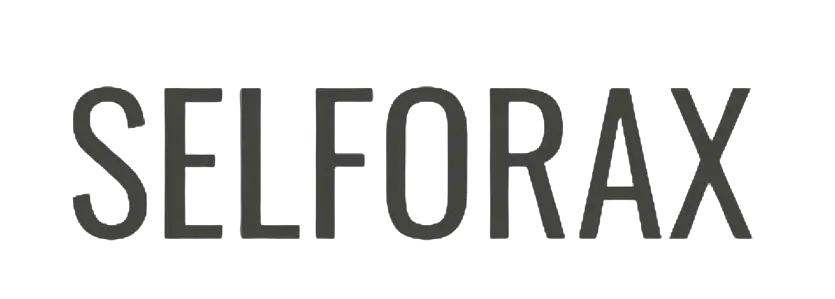I’ve found that keeping a mood tracker bullet journal is a truly insightful habit for maintaining mental health. It’s like a personal diary that doesn’t just record events, but also tracks my emotional ebbs and flows over time.
By assigning colors or symbols to various moods, each page becomes a visual representation of my feelings, allowing me to spot patterns and triggers at a glance.
Why should I have a mood tracker bullet journal?
Introducing a mood tracker bullet journal into my daily routine was a game-changer for me. It’s a personalized space where I can reflect on my day-to-day feelings and start to notice patterns in my moods.
Here’s why it’s become an invaluable part of my life:
- Self-awareness: By tracking my mood, I’m tuning into my emotional well-being on a deeper level. This heightened awareness helps me understand what brings joy and what drains my energy.
- Recognizing triggers: I can spot factors that influence my mood, whether it’s sleep, diet, or interactions with others. Knowing these triggers empowers me to make changes that can lead to better days.
- Managing mental health: For anyone with concerns about their mental health, a mood tracker can be essential. It helps me communicate more effectively with healthcare professionals by providing concrete data about my mood swings and their frequency.
- Creative outlet: It’s not all data and charts. Designing my mood tracker allows for a burst of creativity that’s both fun and therapeutic.
- Tracking progress: Finally, it’s rewarding to see improvements over time. I celebrate the small victories, and it motivates me to continue working towards a balanced life.
The Essentials of Mood Tracking
Mood tracking in my bullet journal has been a game-changer for keeping a close eye on my emotional well-being. It’s like having a personal emotional inventory at my fingertips.
Understanding Mood Trackers

Mood trackers in bullet journals are visual tools that allow me to record how I feel daily.
They usually consist of a chart or graph that represents each day, where I assign colors or doodles to different emotions.
Every evening, I take a moment to reflect on my day and color in the day’s box with how I’ve felt, turning a simple notebook into a colorful tapestry of my emotional patterns.
Benefits of Tracking Your Mood
Tracking my mood helps me identify patterns and triggers in my emotional landscape. By making this a habit, I’ve gained insights into how certain activities or events influence my well-being.
This awareness makes it easier for me to take proactive steps toward maintaining a more balanced mood over time.
Setting Up Your Bullet Journal for Mood Tracking
Setting up a mood tracker in my bullet journal is straightforward. Here’s a basic outline:
- Create a legend: I choose symbols or colors to represent my emotions.
- Design a template: Monthly grids are popular, where each day corresponds to a box.
- Review and reflect: At the end of each day, I fill in the grid based on my predominant mood.
Through this simple habit, my journal is not only a planner but a personal emotional barometer.
Designing Your Mood Tracker
When I first started my mood tracker bullet journal, I was amazed at how the process could be both creative and therapeutic.
Here are some specific ways I’ve honed the design to suit my journey.
Choosing the Right Layouts
I found that choosing the right layout is the cornerstone of creating an effective mood tracker. Simple layouts appeal to those who delight in minimalism, while complex spreads can be more engaging for the artistic soul.
I like mixing up grid views for my daily moods with templates that allocate space for notes on what influenced my emotions.
Color-Coding Your Emotions
By color-coding your emotions, you build a visual language of your inner world. I assign a unique color for each emotion; blue for calm, red for anxious, and yellow for happy—making my patterns of feelings jump off the page.
The colors of the pens I use make it easy to spot trends at a glance.
Incorporating Nature and Doodles
Bringing nature and doodles into my mood tracker adds a calming aspect. Sketching weather patterns or incorporating floral themes helps me connect the dots between my environment and emotional state.
My pages are often adorned with small, peaceful drawings that reflect the day’s mood.
Year in Pixels and Mood Mandala

For a high-level view of my emotional landscape, I create a year in pixels—a compact, year-long mood chart.
But when I’m feeling particularly creative, I turn to a mood mandala. With each emotion, I add a layer to the mandala, resulting in a stunning, meaningful piece of art by year’s end.
Identifying Patterns and Triggers
In my mood tracker bullet journal, I’ve discovered it’s powerful to know not just what I feel but why I feel it. This understanding has been pivotal in managing my well-being.
Recognizing Emotional Patterns
I meticulously log my moods each day and, over time, patterns emerge. Seeing the ebbs and flows, I can pinpoint if my low moods typically occur mid-week or if joy peppers my weekends. It’s like my journal holds up a mirror of my emotional cycle.
Tracking Triggers and Actions
By noting down daily events alongside my feelings, I uncover triggers that might lead to stress or happiness.
Meetings with a particular client always precede anxiety. I follow this by documenting the actions I take, which could either mitigate or exacerbate my mood. Understanding this cause and effect empowers me to make proactive changes.
Correlating Habits and Mood Changes
Some days, changes in my mood seem random until I assess my habits. An unchecked day in my mood tracker might correlate with skipping my morning run.
Tracking these habitual details reveals how they intertwine with my mood fluctuations, guiding me to adjust my routines for healthier emotional outcomes.
Digital and Printable Tools
As someone keen on organizing and understanding my emotions, I’ve found that using a mood tracker bullet journal can be incredibly beneficial.
These tools can range from convenient digital apps to customizable printable templates, each offering unique ways to record and analyze my daily moods.
Mood Tracking Apps
There are several apps designed to help me keep track of my moods right from my phone.
The iMoodJournal app lets me input my emotions alongside notes about sleep, and medication and even allows for photo uploads to observe any physical changes. This can be especially helpful for identifying patterns and triggers over time.
Free Printable Mood Trackers
If I prefer a more hands-on approach, there are various free printable trackers available online.
Websites like 101 Planners offer templates designed to be used within a bullet journal, providing an effective and artistic way to visually represent my emotional fluctuations.
Using Templates and Emojis
Templates often include an element of creativity, such as incorporating emojis to depict different moods.
For example, I can select specific emojis that resonate with my feelings and use them across the templates, making my mood-tracking experience both engaging and insightful.
Daily Practices and Self-Care
I’ve found that integrating a mood tracker bullet journal into my daily routine has been a game changer for my overall well-being. It’s an effective way to reflect on my day-to-day experiences and be proactive about my mental health.
Incorporating Mood Tracking in Daily Life
In my mood journal, I make a point of jotting down how I feel each day. A simple color-coded chart or a set of emoji stickers helps me track my emotional patterns at a glance.
This daily habit brings attention to fluctuations in my mood and prompts me to consider what events or interactions might be influencing my emotions.
Self-Care Rituals and Mood
Dedicated self-care spreads in my bullet journal remind me to prioritize activities that nurture my mind and body—like reading, taking long baths, or meditating.
I’ve noticed that these rituals directly impact my mood, and keeping them visible in my journal ensures they don’t get lost in the hustle of everyday life.
Tracking Sleep, Food, and Exercise

I’ve found a strong connection between my mood, sleep quality, the food I eat, and my physical activity levels.
By including tables in my journal to log my sleep hours, meals, and workouts, I can correlate my lifestyle choices with shifts in my mood. Observing these patterns helps me make more informed decisions that contribute to my overall health.
Understanding Mood Disorders
Using a mood tracker bullet journal has become an essential part of my routine to understand and manage my mood patterns.
It especially helps in recognizing the symptoms of different mood disorders, which can be intricate and vary significantly from person to person.
Depression and Anxiety
Depression is a mood disorder characterized by persistent feelings of sadness and loss of interest, often accompanied by anxiety—a condition marked by intense, excessive, and persistent worry and fear about everyday situations.
Key symptoms of depression include changes in sleep, appetite, energy level, concentration, daily behavior, or self-esteem, and can also include thoughts of suicide.
Anxiety may manifest through physical symptoms like increased heart rate and shakiness.
Bipolar Disorder and Mood Swings
Bipolar disorder is another mood disorder, distinguished by extreme fluctuations in mood, from high (mania) to low (depression). During manic episodes, individuals might experience high energy, reduced need for sleep, and loss of touch with reality.
Mood swings with bipolar disorder are more severe than ordinary moodiness and can significantly impair daily life, making routine tracking in a bullet journal helpful for identifying patterns.
Therapy and Professional Help
For those dealing with mood disorders, therapy can be a lifeline. Therapists offer strategies to manage and cope with symptoms. They may also recommend medication or other therapies.
Engaging in therapy can provide a structured approach to understanding and managing disorders like depression and bipolar disorder, often enhancing the effectiveness of a mood tracker bullet journal in daily life.
Community and Inspiration
When I discovered mood tracker bullet journal ideas, I was amazed at how this method propelled my productivity and mindfulness.
But what truly made a difference was the vibrant community I joined; they were the source of endless creative inspiration.
Joining Bullet Journaling Groups

I found a community to be the cornerstone of bullet journaling. By joining bullet journaling groups, either locally or online, I expanded my network with enthusiasts who shared valuable insights into organizing my planner efficiently.
In these groups, I could exchange mood tracker ideas, which not only enhanced my own journaling experience but also introduced me to a variety of styles and approaches.
Sharing and Reflecting with Others
The practice of sharing my bullet journal spreads, especially mood tracker pages, helped me reflect on my own productivity and personal growth over time.
Discussing different patterns in moods with peers enabled me to see how common certain emotional trends were and how others managed their emotional well-being.
Finding Inspirational Ideas
Creativity in bullet journaling never ceases to inspire me. For fresh mood tracker ideas, I love browsing through shared journals.
It’s where I find innovative designs that not only look appealing but also make tracking my moods a more engaging practice. Stumbling upon various layouts encourages me to tweak my method and keeps the process refreshing.
My opinion on the mood tracker bullet journal
Starting a mood tracker bullet journal has been a real game-changer for me. It’s simple yet such an insightful tool that allows me to reflect on my emotional patterns over time. I appreciate its flexibility, as it can be as artistic or as minimalist as one prefers.
Here’s what I find most useful about it:
- Visual Representation: Seeing a month’s worth of emotions laid out in color-coded days helps me identify trends at a glance.
- Personalization: The bullet journal adapts to my lifestyle; I can make it as detailed or as brief as I like.
- Creative Outlet: I enjoy the aspect of creativity; decorating my mood tracker is therapeutic in its own right.
When it comes to mood tracking, the key for me is consistency. I make a habit of reflecting at the end of each day which makes my tracker more accurate and, ultimately, more useful.
I often turn to different layout designs and experiment with them depending on how my month is looking.
What has proved most valuable is the increased self-awareness that comes from tracking my mood. It’s not just about the colors and the shapes on the page; it’s about understanding my emotional triggers and learning how to manage them better.
The bullet journal is a personal space for honesty and encourages a healthy mental habit of checking in with myself.
Frequently Asked Questions – Mood Tracker Bullet Journal
When it comes to keeping a mood tracker bullet journal, some common queries come up. Let’s tackle the ones you’re most likely curious about.
Can I start a Bullet Journal in the middle of the year?
Absolutely! Bullet journals are customizable. The beauty is that you can begin at any point in the year. There’s no need to wait for a new year; just start with the current month and continue from there.
What should be on the first page of a journal?
Your first page is ideally a table of contents or an index where you list your topics and page numbers. It helps you navigate your journal. You might also consider adding a key to your bullet symbols.
Does bullet journaling help with anxiety?
Many users find bullet journaling therapeutic. By organizing your thoughts and tracking habits, including mood swings, you might feel an increased sense of control, which can reduce anxiety.



[…] Mood Tracker Bullet Journal: Guide To Emotional Clarity 2024 […]